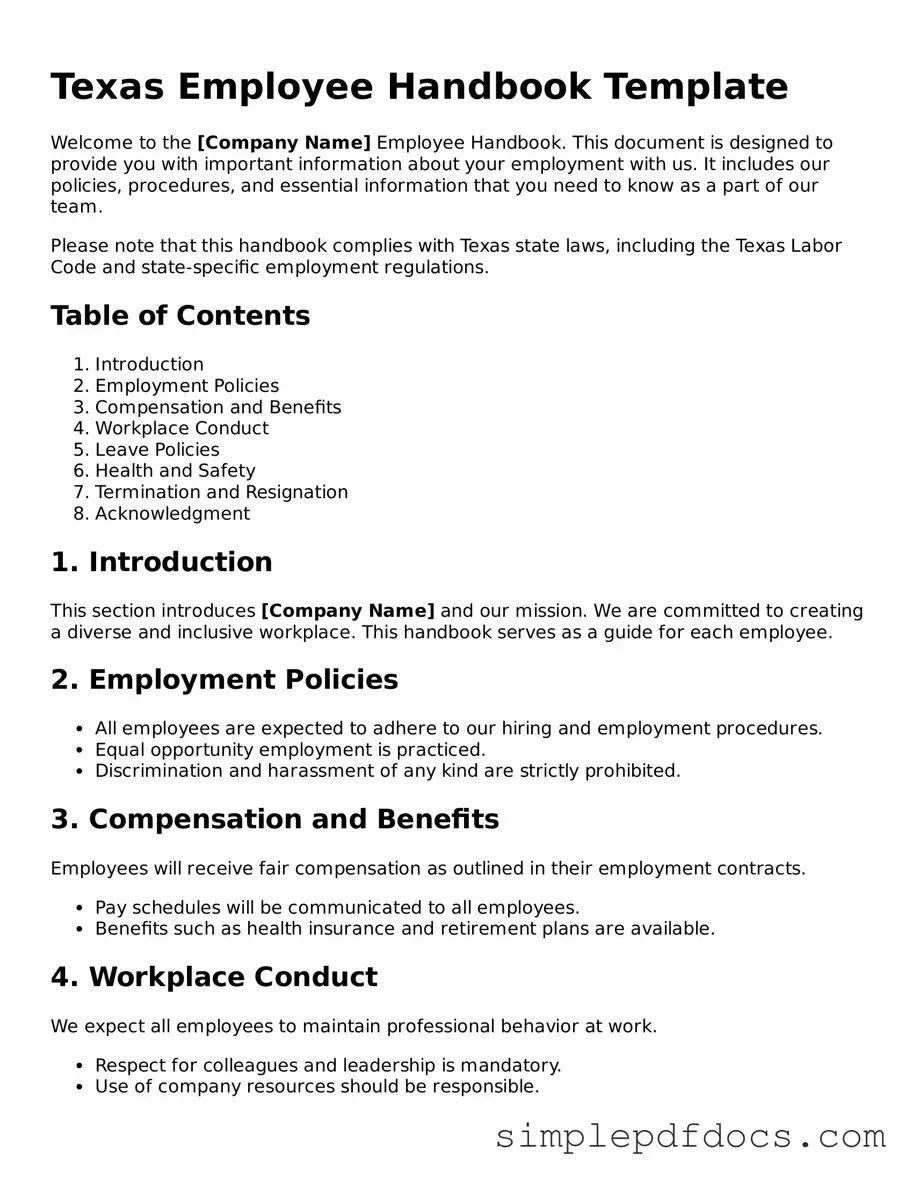Legal Employee Handbook Document for the State of Texas
The Texas Employee Handbook form serves as a crucial document that outlines the rights, responsibilities, and expectations for both employees and employers within the state of Texas. This handbook not only provides important policies and procedures but also fosters a clear understanding of workplace standards. By establishing guidelines, the form helps create a positive work environment and minimizes potential misunderstandings.
Get Document Here
